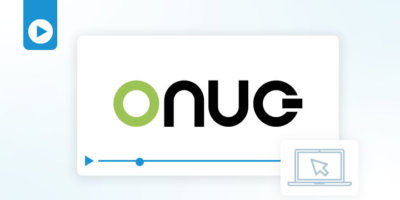Share this

What does it mean to deliver a self-driving network? That’s exactly the focus of our partner, IP Fabric’s, podcast series “For the Journey.” In the first episode of this series, their team asked Itential’s VP of Product Management, Peter Sprygada to join them as a guest to discuss network configuration, automation, and orchestration and how that impacts the journey toward the “nirvana of the self-driving network.”
Hosted by IP Fabric’s Daren Fulwell, an exciting discussion was held spanning topics such as extending the scope of modern network automation, evolving network automation from a simple verb to a state of mind, and the necessary shift in the way practitioners view automation within the context of the network.
If you want to hear the full recording, you can catch it here or check out some of the highlights below.
Extending the Scope of Modern Network Automation
Network automation has become a common topic, but often the focus of these conversations centers on network programmability. While the use of intelligent software to deploy, manage and troubleshoot network elements is a key component to the universal adoption of end-to-end automation across the enterprise, we have now reached an era where analyzing automation at a higher level is the only way to realize the full opportunities that automation at scale provides.
By discussing network automation from a NetOps/DevOps perspective, we allow ourselves to look to the future of the industry, understand the steps that need to be taken, and recognize the opportunities available to enable and promote the evolution toward the next phase of network programmability.
Part of this next evolutionary phase is leaving behind the notion that to be a successful network engineer, you need to also become a programmer, a developer, with the ability to write heavy code. Though these may be great skills to possess, the rise of low/no-code tools negates that requirement. As the industry continues to democratize the network team, and restructure network management, coding skills have become just one small piece of a much larger puzzle. To see success, it is far more important for network managers to understand and accept the way the network has evolved, including the fact that the legacy model of hands-on network management is no longer truly relevant.
Network Automation Becomes a State of Mind
Even as we enter 2022, “automation” remains a verb; it is seen as something that you do. But that is a limiting view that we can no longer afford to hold. Network automation needs to become more engrained into the way that go about solving problems. Automation is a state of mind that when adopted should be applied as much as possible in all areas of networking challenges.
This includes applying automation to use cases of all sizes, not just the big complex use cases that require drastic measures. When automation becomes a mindset, it becomes clear that it is so much more than just applying a configuration to a network device. Newer use cases are coming to the forefront of the conversation at a rapid pace. From triaging network issues, creating self-documenting networks, configuration testing to ensure that our configurations aren’t only in compliance, but are also producing the desired outcome. When we truly embrace the idea that automation can solve or benefit almost every area within the network, we are able to expand the value of automation as a practice and utilize automation platforms and tools to their full extent.
The goal of the network should be to scale at the same speed as its applications. It becomes easier to remain dynamic and agile with your network management strategy when smaller automations are leveraged and utilized as building blocks to a larger automation strategy. Without viewing the network as a living, and ever-changing organism, maintaining compliance, even with the use of automated configuration management tools, becomes impossible. Just as the “network project” does not stop at deployment, neither does the need to strive for continued scalability.
Evolving Network Teams to Focus on High Level Initiatives
There is an unspoken fear in the industry that deploying automation at scale will have a negative impact on the role of the network team. If teams are not spending their days break-check-fixing compliance issues and putting out fires, then what does their day to day look like? On paper, that fear makes sense, but in practice, it is clear how unfounded it truly is.
With a fully automated network, network teams can leave behind the never-ending task-based existence of a manual network management approach and engage in more creative business-driving initiatives. Higher level projects are now within reach. Goal posts that seemed to be constantly moving further away, have suddenly become stationary. By utilizing the building block model of automating smaller use cases first, while ensuring scalability, you are actively demonstrating the benefits of investing in automation, and the overall effect it will have on your organizations bottom line.
Check out the full podcast here:
An Operational Mindset to Network Automation
Network automation platforms and tools have come a long way. Not too long ago, options were very limited. There were great big behemoth solutions that cost millions of dollars to implement, and then there was open source options, and not much in between. Now we have tools on the market that help jumpstart the automation journey, no matter where you are.
Simultaneously, we have moved away from a tool-first approach, and toward an approach that begins with defining the right operational model, and then selecting the right pieces and parts to achieve the desired outcome. Once the operational model is defined and the supporting tools selected, the overarching ecosystem has been established.
This approach is the exact philosophy that Itential was built upon. By providing a low-code, drag-and-drop automation platform, Itential has democratized network management and made automation accessible for network teams of all sizes and skillsets, no matter their automation goals. Whether an organization is just getting started with automation or preparing to fully embrace the “automation as a mindset” model of network management, the Itential Automation Platform is making it even easier to progress network automation in any organization. In addition, Itential strategically partners with an ecosystem of like-minded providers such as IP Fabric to help further propel the industry and ensure customers are able to leverage the best technology stacks for their business. To learn more about Itential’s integration with IP Fabric, check out the Pre-Built Integration and Pre-Built Automations.
For more information about how to transform network automation from a verb to a mindset, check out the the full IP Fabric Podcast here and explore each topic further. If you’re ready to get started with the Itential Automation Platform, you can create your free account here and be automating in minutes.





